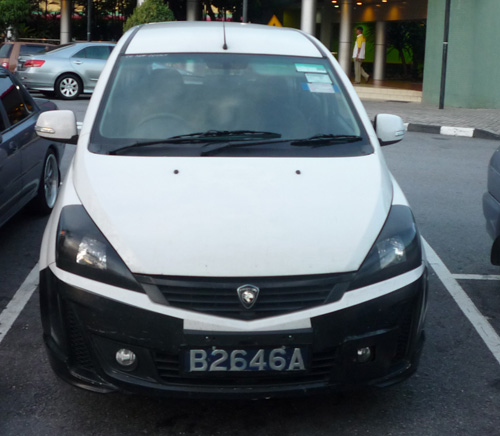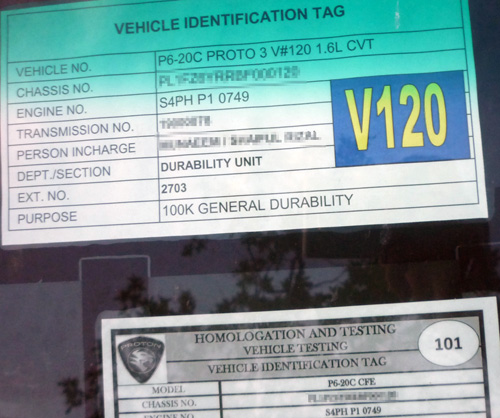
These days when a Proton test prototype goes out for a drive, sometimes it’ll have a piece of paper on its front or rear windshield that identifies what exactly is being tested.
For example, last month we saw a white pre-FL Proton Saga with a label that describes it as an IAFM+ CVT test vehicle, which we’re assuming means a 1.3 litre IAFM+ engine paired to a CVT gearbox.
This white and black Proton Exora’s label reveals that it is used for general durability testing of a certain powertrain combination. The figures seem to suggest they’re testing what they’re calling a Campro CFE engine paired to a CVT gearbox.

If you recall, we’ve seen the letters CFE used before. At last year’s KLIMS 2010, Proton exhibited an engine called the Campro CFE which was a 1.6 litre inline-4 cylinder engine with a light boost turbocharger that provides a power output equivalent to a 2.0 litre normally aspirated engine. Power figures cited was 138hp at 5,000rpm and 205Nm between 2000rpm to 4,000rpm.
An upgrade in power from a Campro Turbo would explain why the other black and white Exora prototype we saw had rear disc brakes.
We also saw a Proton prototype being tested in a snowy country earlier this year bearing the same “CFE” lettering on a dashboard sticker. The full words on the dashboard in that snow prototype was P3 – CFE TURBO CVT3 ESP.
Look after the jump for all related spyshots. Hat tip to reader Ahmad Afifi for snapping a close-up of the paper on the windscreen and sending this in to us! :)
[zenphotopress number=999 album=2299]
[zenphotopress number=999 album=1968]
AD: Drive the Proton model of your dreams. Submit your details and Proton PJ will get in touch with you.
Looking to sell your car? Sell it with Carro.



















AI-generated Summary ✨
Comments express excitement and curiosity about the Proton Exora prototypes, with some praising the design and potential features like the turbocharged engine and CVT transmission. There is optimism about Proton's technological advancements, including locally designed engines and open opportunities for Malaysia's automotive industry. However, some critics remain skeptical, criticizing previous engine reliability and quality issues, as well as Proton's competitive position compared to Japanese and Korean brands. Several comments emphasize the importance of thorough testing, proper maintenance, and genuine parts to ensure durability, with some warning about testing procedures and potential supplier problems. Overall, sentiments are cautiously optimistic with hopes for improvements in quality, performance, and competitiveness, while a few comments voice frustrations about past problems and industry challenges.